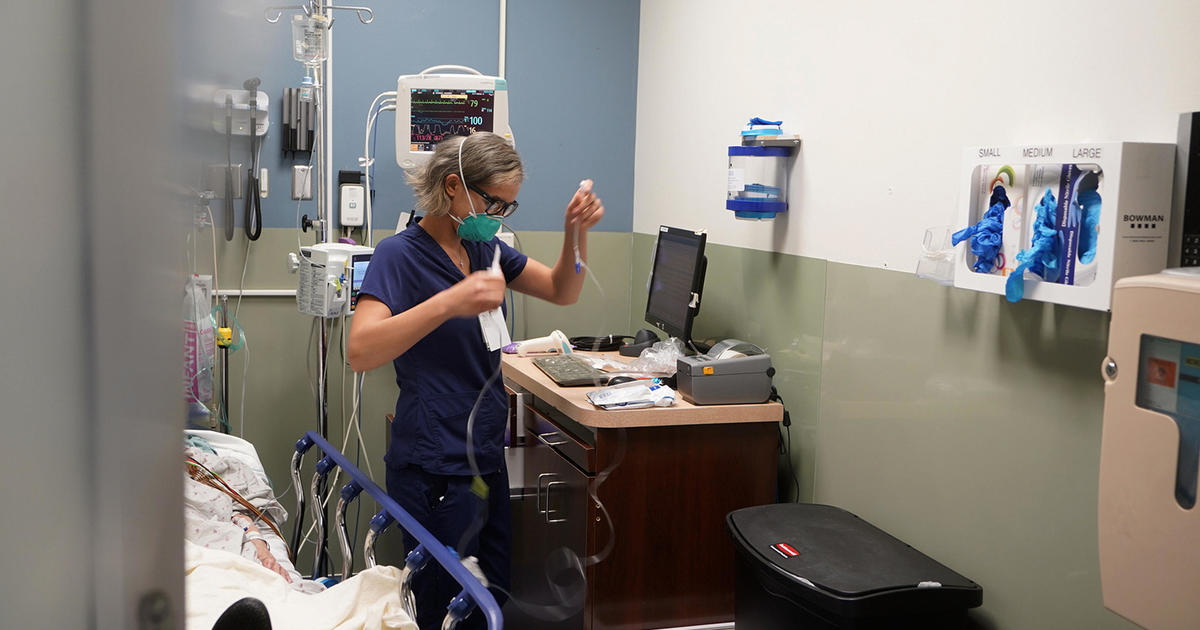Coronavirus Pandemic Could Impact Cancer Rates And Care In The Future
(CNN) -- The news about cancer is good for now, but the future doesn't look as bright, according to a report published this week by the American Association for Cancer Research.
Progress in cancer care
The AACR Cancer Progress Report 2020 found the number of cancer survivors living in the United States has reached a record high, with more than 16.9 million survivors, according to the report.
The US cancer death rate fell by 29% from 1991 to 2017. That's about 2.9 million lives saved, the report said.
Since August 2019, the US Food and Drug Administration has also approved a record number of treatments. Thirty-five were approved between August 2019 and July 31 of this year, several of the treatments are for cancer types that have not had many, or any, options.
Dr. Antoni Ribas said he has personally seen this improvement in care in his own oncology practice. Ten years ago, only one in five patients with metastatic melanoma would have benefited from treatments. Today, half of his patients with this kind of cancer benefit from existing treatments.
"Even though we have made many advances against cancer, much more work needs to be done," Ribas said. Ribas is the president of AACR and a professor of medicine, surgery and molecular and medical pharmacology at the University of California Los Angeles Jonsson Comprehensive Cancer Center. "For example, it is estimated that more than four out of 10 cancer diagnosis, among us adults aged 30 or older, are attributable to potentially preventable causes such as smoking, obesity, and alcohol."
The pandemic has taken a toll
The Covid-19 pandemic has had a negative impact on cancer care. Nearly 80% of people in treatment for cancer have experienced some delay in care due to the pandemic.
Looking at data from 190 hospitals in 23 states, the report also found that a number of tests to screen for cervical, breast and colon cancer fell by 85% or more after the first Covid-19 cases was diagnosed in the US.
Delays in cancer screenings and treatment are projected to lead to more than 10,000 additional deaths from breast and colorectal cancer over the next decade.
Obesity and aging increase risks
About 20% of new cancers are the result of a combination of excess body weight, diet, and being physically inactive, according to Dr. Christopher Li, an AACR Steering Committee Member. More than 40% of the US population is obese, according to the US Centers for Disease Control and Prevention, and within the next decade it's expected that half of all Americans will be obese.
"This rapid increase in obesity has fueled alarming increases in the incidence rates of a number of cancers related to obesity," said Li, an epidemiologist who specializes in identifying breast cancer risk factors and works at Fred Hutchinson Cancer Research Center in Seattle. "Research on how the effects of obesity and cancer can be countered, along with new strategies to reduce obesity and curb this major epidemic are of critical public health importance."
The population is also aging. Age is the greatest risk factor for developing cancer, about 60% of people who have cancer are older than 65. That age group will more than more than double in the next 40 years. With 80 million people in that older demographic in 2040, the US is projected to go from just over 1.8 million cancer cases in 2020 to 2.3 million by 2040.
Kids are still getting cancer
Five year survival rates for children and teens with cancer in the US have increased from 63% in the mid-1970s to 85% in 2016, yet still so much more research needs to be done, the report found.
In 2020, an estimated 413,000 children will develop cancer and 328,000 will die from it, the report found. Cancer remains the second leading cause of death among children ages one to 14.
Black children are 50% more likely to die of cancer than White children, the report found.
Systemic racism tied to cancer
Great racial disparities remain in cancer survival rates for children and adults.
The death rate for stomach cancer is two times higher among Hispanics compared to non-Hispanics, for example.
Access to care and insurance coverage is also crucial. Liver cancer patients with no health insurance live only half as long as liver cancer patients with coverage. Black women with ovarian cancer, on average, do not survive as long as non-Hispanic White patients with the disease.
Medically underserved populations receive less education on cancer prevention and less access to cancer screening. There are also disparities in the timely delivery of life saving treatments, the report found.
"There are multiple complex reasons for those differences, but the majority of these factors are directly influenced by ongoing structural and systemic racism in our country," Li said. "In order to meaningfully address them, we need to continue to see broad changes in institutional and government policies and practices."
What can be done
AACR called for additional consistent government funding for cancer research and better access to health care and screenings.
Scientists also said that individuals can also help themselves and reduce their cancer risk. Regular checkups and timely screenings can detect cancer when it is at a stage where treatment is most effective. Regular exercise can reduce nine different types of cancer, including several common cancers like breast, colon and lung cancers. Quitting, or not starting, to smoke or vape also reduces one's cancer risk.
"By working together we will be in a better position to accelerate the pace of progress," said Dr. Margaret Foti, AACR's chief executive officer, "and make major strides toward the goal of preventing and curing all cancers at the earliest possible time."
The-CNN-Wire
™ & © 2020 Cable News Network, Inc., a WarnerMedia Company. All rights reserved.



